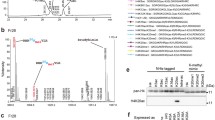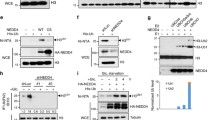Abstract
Butyrate-induced histone acetylation plays an important role in the regulation of gene expression. However, the regulation mechanisms of histone modification remain largely unclear. To comprehensively analyze histone modification induced by butyrate, we utilized chromatin immunoprecipitation (ChIP) technology combined with next-generation sequencing technology (ChIP-seq) to analyze histone modification (acetylation) induced by butyrate and to map the epigenomic landscape of normal histone H3 and acetylated histone H3K9 and H3K27 on a large scale. To determine the location of histone H3, acetyl-H3K9, and acetyl-H3K27 binding sites within the bovine genome, we analyzed the H3-, acetyl-H3K9-, and acetyl-H3K27-enriched binding regions in the proximal promoter within 5 kb upstream, or at the 5′ untranslated region (UTR) from the transcriptional start site (TSS), exon, intron, and intergenic regions (defined as regions 25 kb upstream or 10 kb downstream from the TSS). Our analysis indicated that the distribution of histone H3, acetyl-H3K9, and acetyl-H3K27 correlated with transcription activity induced by butyrate. Using the GADEM algorithm, several motifs were generated for each of the ChIP-seq datasets. A de novo search for H3, acetyl-H3K9, and acetyl-H3K27 binding motifs indicated that histone modification (acetylation) at various locations changes the histone H3 binding preferences. Our results reveal that butyrate-induced acetylation in H3K9 and H3K27 changes the sequence-based binding preference of histone H3 and underlies the potential mechanisms of gene expression regulation induced by butyrate.









Similar content being viewed by others
References
Bailey TL, Elkan C (1994) Fitting a mixture model by expectation maximization to discover motifs in biopolymers. Proceedings/… International Conference on Intelligent Systems for Molecular Biology; ISMB. International Conference on Intelligent Systems for Molecular Biology 2:28–36
Baldwin RL (1999) The proliferative actions of insulin, insulin-like growth factor-I, epidermal growth factor, butyrate and propionate on ruminal epithelial cells in vitro. Small Rumin Res 32:261–268
D’Haeseleer P (2006) What are DNA sequence motifs? Nat Biotechnol 24(4):423–425
Feng J, Liu T et al (2011) Using MACS to identify peaks from ChIP-Seq data. Curr Protoc Bioinformatics Chapter 2: Unit 2 14
Fischer A, Sananbenesi F et al (2007) Recovery of learning and memory is associated with chromatin remodelling. Nature 447(7141):178–182
Goldberg AD, Allis CD et al (2007) Epigenetics: a landscape takes shape. Cell 128(4):635–638
Karolchik D, Hinrichs AS et al (2007) The UCSC Genome Browser. Curr Protoc Bioinformatics Chapter 1: Unit 1 4
Langmead B, Schatz MC et al (2009a) Searching for SNPs with cloud computing. Genome Biol 10(11):R134
Langmead B, Trapnell C et al (2009b) Ultrafast and memory-efficient alignment of short DNA sequences to the human genome. Genome Biol 10(3):R25
Li CJ, Elsasser TH (2005) Butyrate-induced apoptosis and cell cycle arrest in bovine kidney epithelial cells: involvement of caspase and proteasome pathways. J Anim Sci 83(1):89–97
Li RW, Li C (2006) Butyrate induces profound changes in gene expression related to multiple signal pathways in bovine kidney epithelial cells. BMC Genomics 7:234
Li RW, Li CJ (2007) Effects of butyrate on the expression of insulin-like growth factor binding proteins in bovine kidney epithelial cells. Open Vet Sci J 2007(1):14–19
Li CJ, Li RW (2008) Butyrate induced cell cycle arrest in bovine cells through targeting gene expression relevant to DNA replication apparatus. Gene Regul Syst Biol 2:113–123
Li CJ, Li RW et al (2007) Pathway analysis identifies perturbation of genetic networks induced by butyrate in a bovine kidney epithelial cell line. Funct Integr Genomics 7(3):193–205
Li C-J, Li RW et al (2010) MicroRNA (miRNA) expression is regulated by butyrate-induced epigenetic modulation of gene expression in bovine cells. Genet Epigenet 3:23–32
Mali P, Chou BK et al (2010) Butyrate greatly enhances derivation of human induced pluripotent stem cells by promoting epigenetic remodeling and the expression of pluripotency-associated genes. Stem Cells 28(4):713–720
Marinova Z, Leng Y et al (2010) Histone deacetylase inhibition alters histone methylation associated with heat shock protein 70 promoter modifications in astrocytes and neurons. Neuropharmacology 60(7–8):1109–1115
Myzak MC, Dashwood RH (2006) Histone deacetylases as targets for dietary cancer preventive agents: lessons learned with butyrate, diallyl disulfide, and sulforaphane. Curr Drug Targets 7(4):443–452
Nelson CE, Hersh BM et al (2004) The regulatory content of intergenic DNA shapes genome architecture. Genome Biol 5(4):R25
Ohta T (2011) Near-neutrality, robustness, and epigenetics. Genome Biol Evol 3:1034–1038
Riggs MG, Whittaker RG et al (1977) n-Butyrate causes histone modification in HeLa and Friend erythroleukaemia cells. Nature 268(5619):462–464
Salmon-Divon M, Dvinge H et al (2010) PeakAnalyzer: genome-wide annotation of chromatin binding and modification loci. BMC Bioinformatics 11:415
Stelling J, Sauer U et al (2004) Robustness of cellular functions. Cell 118(6):675–685
Tozawa H, Kanki Y et al (2011) Genome-wide approaches reveal functional interleukin-4-inducible STAT6 binding to the vascular cell adhesion molecule 1 promoter. Mol Cell Biol 31(11):2196–2209
Wolffe AP, Guschin D (2000) Review: chromatin structural features and targets that regulate transcription. J Struct Biol 129(2–3):102–122
Wong H, Victor JM et al (2007) An all-atom model of the chromatin fiber containing linker histones reveals a versatile structure tuned by the nucleosomal repeat length. PLoS One 2(9):e877
Zhang Y, Liu T et al (2008) Model-based analysis of ChIP-Seq (MACS). Genome Biol 9(9):R137
Zhou VW, Goren A et al (2011) Charting histone modifications and the functional organization of mammalian genomes. Nat Rev Genet 12(1):7–18
Author information
Authors and Affiliations
Corresponding author
Additional information
Mention of a product, reagent, or source does not constitute an endorsement by the USDA to the exclusion of other products or services that perform a comparable function.
Electronic supplementary material
Below is the link to the electronic supplementary material.
Supplementary Fig. 1
JPEG 270 kb
ESM 1
XLS 771 kb
ESM 2
XLS 416 kb
ESM 3
XLS 2,298 kb
Rights and permissions
About this article
Cite this article
Shin, J.H., Li, R.W., Gao, Y. et al. Genome-wide ChIP-seq mapping and analysis reveal butyrate-induced acetylation of H3K9 and H3K27 correlated with transcription activity in bovine cells. Funct Integr Genomics 12, 119–130 (2012). https://doi.org/10.1007/s10142-012-0263-6
Received:
Revised:
Accepted:
Published:
Issue Date:
DOI: https://doi.org/10.1007/s10142-012-0263-6




